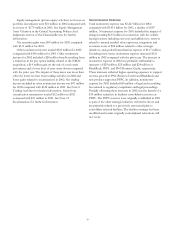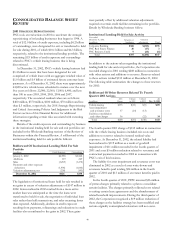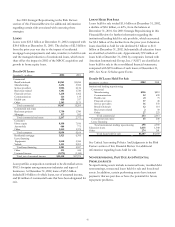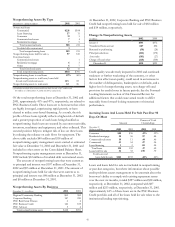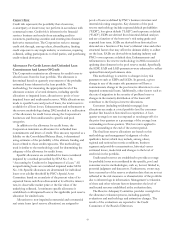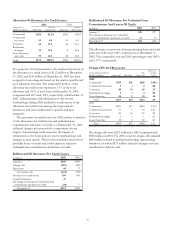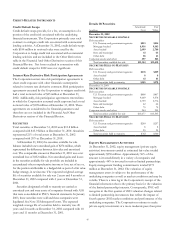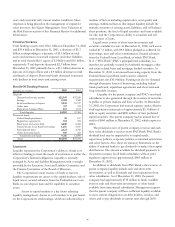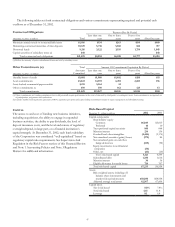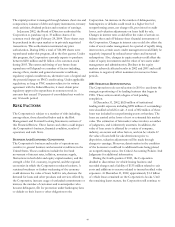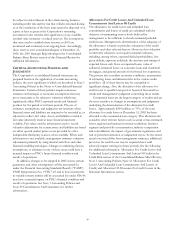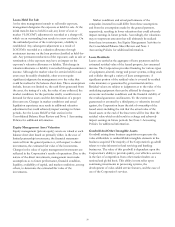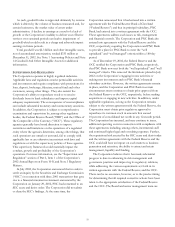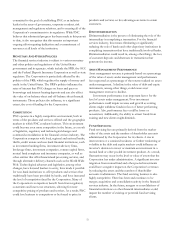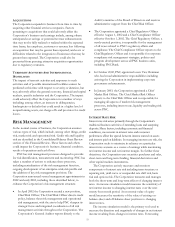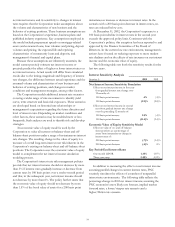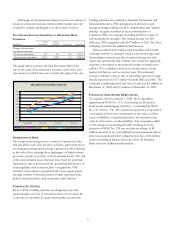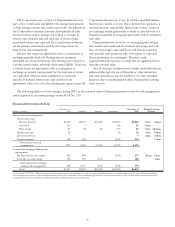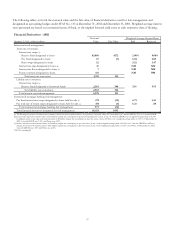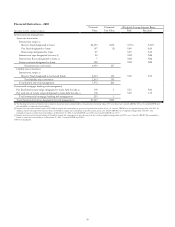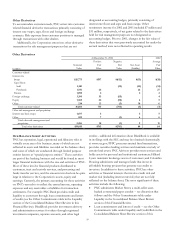PNC Bank 2002 Annual Report Download - page 51
Download and view the complete annual report
Please find page 51 of the 2002 PNC Bank annual report below. You can navigate through the pages in the report by either clicking on the pages listed below, or by using the keyword search tool below to find specific information within the annual report.49
be subject to risks inherent in the vehicle leasing business,
including credit risk and the risk that vehicles returned during
or at the conclusion of the lease term cannot be disposed of at
a price at least as great as the Corporation’s remaining
investment in the vehicles after application of any available
residual value insurance or related reserves. The assumptions
that were used to establish these reserves in 2001 are
monitored and evaluated on an ongoing basis. Accordingly,
these reserves were considered adequate at December 31,
2002. See 2001 Strategic Repositioning in the Consolidated
Balance Sheet Review section of this Financial Review for
additional information.
CRITICAL ACCOUNTING POLICIES AND
JUDGMENTS
The Corporation’s consolidated financial statements are
prepared based on the application of certain accounting
policies, the most significant of which are described in Note 1
Accounting Policies in the Notes to Consolidated Financial
Statements. Certain of these policies require numerous
estimates and strategic or economic assumptions that may
prove inaccurate or be subject to variations which may
significantly affect PNC’s reported results and financial
position for the period or in future periods. The use of
estimates, assumptions, and judgments are necessary when
financial assets and liabilities are required to be recorded at, or
adjusted to reflect, fair value. Assets and liabilities carried at
fair value inherently result in more financial statement
volatility. Fair values and the information used to record
valuation adjustments for certain assets and liabilities are based
on either quoted market prices or are provided by other
independent third-party sources, when available. When such
information is not available, management estimates valuation
adjustments primarily by using internal cash flow and other
financial modeling techniques. Changes in underlying factors,
assumptions, or estimates in any of these areas could have a
material impact on PNC’s future financial condition and
results of operations.
In addition, changes to be adopted in 2003 in how certain
guarantees and other contingencies will be accounted for
under the Financial Accounting Standards Board’s (“FASB”)
FASB Interpretation No. (“FIN”) 45 and in how investments
in variable interest entities will be accounted for under FIN 46
may have a material impact on PNC’s financial condition and
results of operations. See Note 1 Accounting Policies and
Note 29 Commitments And Guarantees for further
information.
Allowances For Credit Losses And Unfunded Loan
Commitments And Letters Of Credit
The allowances for credit losses and unfunded loan
commitments and letters of credit are calculated with the
objective of maintaining reserve levels believed by
management to be sufficient to absorb estimated probable
credit losses. Management’s determination of the adequacy of
the allowances is based on periodic evaluations of the credit
portfolio and other relevant factors. However, this evaluation
is inherently subjective as it requires material estimates,
including, among others, expected default probabilities, loss
given default, exposure at default, the amounts and timing of
expected future cash flows on impaired loans, value of
collateral, estimated losses on consumer loans and residential
mortgages, and general amounts for historical loss experience.
The process also considers economic conditions, uncertainties
in estimating losses and inherent risks in the various credit
portfolios. All of these factors may be susceptible to
significant change. Also, the allocation of the allowance for
credit losses to specific loan pools is based on historical loss
trends and management’s judgment concerning those trends.
Commercial loans are the largest category of credits and are
the most sensitive to changes in assumptions and judgments
underlying the determination of the allowance for credit
losses. Approximately $504 million, or 75%, of the total
allowance for credit losses at December 31, 2002 has been
allocated to the commercial loan category. This allocation also
considers other relevant factors such as actual versus estimated
losses, regional and national economic conditions, business
segment and portfolio concentrations, industry competition
and consolidation, the impact of government regulations, and
risk of potential estimation or judgmental errors. To the extent
actual outcomes differ from management estimates, additional
provision for credit losses may be required that would
adversely impact earnings in future periods. See the following
for additional information: Allowances For Credit Losses And
Unfunded Loan Commitments And Letters Of Credit in the
Credit Risk section of the Consolidated Balance Sheet Review;
Note 1 Accounting Policies; Note 12 Allowances For Credit
Losses And Unfunded Loan Commitments And Letters of
Credit; and Allocation Of Allowance For Credit Losses in the
Statistical Information section.


